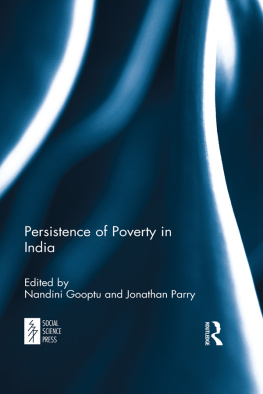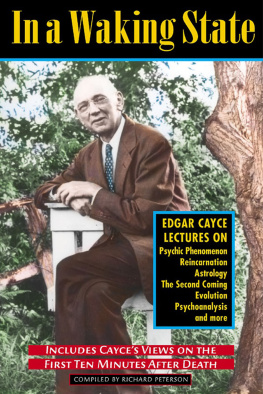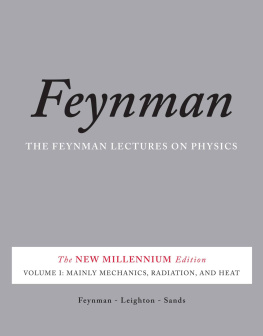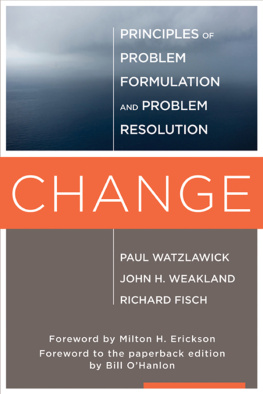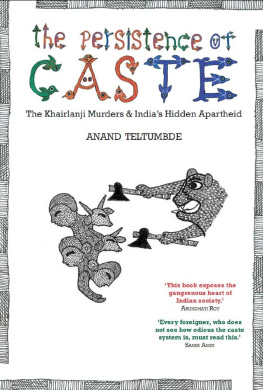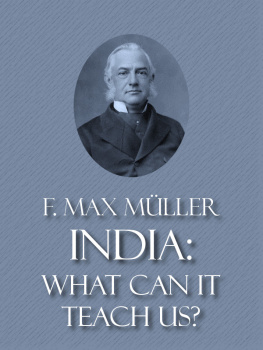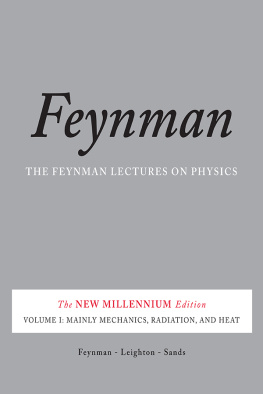Richard L. Park - Change and the Persistence of Tradition in India: Five Lectures
Here you can read online Richard L. Park - Change and the Persistence of Tradition in India: Five Lectures full text of the book (entire story) in english for free. Download pdf and epub, get meaning, cover and reviews about this ebook. publisher: University of Michigan Center for South and Southeast Asian Studies, genre: Politics. Description of the work, (preface) as well as reviews are available. Best literature library LitArk.com created for fans of good reading and offers a wide selection of genres:
Romance novel
Science fiction
Adventure
Detective
Science
History
Home and family
Prose
Art
Politics
Computer
Non-fiction
Religion
Business
Children
Humor
Choose a favorite category and find really read worthwhile books. Enjoy immersion in the world of imagination, feel the emotions of the characters or learn something new for yourself, make an fascinating discovery.

- Book:Change and the Persistence of Tradition in India: Five Lectures
- Author:
- Publisher:University of Michigan Center for South and Southeast Asian Studies
- Genre:
- Rating:5 / 5
- Favourites:Add to favourites
- Your mark:
- 100
- 1
- 2
- 3
- 4
- 5
Change and the Persistence of Tradition in India: Five Lectures: summary, description and annotation
We offer to read an annotation, description, summary or preface (depends on what the author of the book "Change and the Persistence of Tradition in India: Five Lectures" wrote himself). If you haven't found the necessary information about the book — write in the comments, we will try to find it.
Change and the Persistence of Tradition in India: Five Lectures — read online for free the complete book (whole text) full work
Below is the text of the book, divided by pages. System saving the place of the last page read, allows you to conveniently read the book "Change and the Persistence of Tradition in India: Five Lectures" online for free, without having to search again every time where you left off. Put a bookmark, and you can go to the page where you finished reading at any time.
Font size:
Interval:
Bookmark:

THE UNIVERSITY OF MICHIGAN CENTER FOR SOUTH AND SOUTHEAST ASIAN STUDIES
MICHIGAN PAPERS ON SOUTH AND SOUTHEAST ASIA
Editorial Board
John K. Musgrave
George B. Simmons
Thomas R. Trautmann, chm.
Ann Arbor,
Michigan
CHANGE AND THE PERSISTENCE OF TRADITION IN INDIA
Five Lectures
Richard L. Park, Editor
Open access edition funded by the National Endowment for the Humanities / Andrew W. Mellon Foundation Humanities Open Book Program
Library of Congress Catalog Card Number 76-635331
Copyright 1971
by
Center for South and Southeast Asian Studies
The University of Michigan
Ann Arbor, Michigan 48104
Printed in the United States of America
ISBN 978-0-472-03843-5 (paper)
ISBN 978-0-472-12826-6 (ebook)
ISBN 978-0-472-90226-2 (open access)
The text of this book is licensed under a Creative Commons Attribution-NonCommercial-NoDerivatives 4.0 International License: https://creativecommons.org/licenses/by-nc-nd/4.0/
The lectures presented in this volume were given during the summer of 1970 under the sponsorship of the CIC Summer Program on South Asia and the Center for South and Southeast Asian Studies of The University of Michigan. The lecture by A. K. Ramanujan, Professor of Dravidian Studies and Linguistics at The University of Chicago (The Interior Landscape: The Poetic Tradition in Classical Tamil), and that by Padmanabha S. Jaini, Professor of Indic Languages and Literatures at The University of Michigan (ramaas and their Conflict with Brahmanical Society), cannot be included because of commitments to publication elsewhere.
It should be recognized that these essays appear in revised lecture form, and not as fully polished scholarly papers. They carry nevertheless the authority--and no little verve--of experienced scholars concerned both with the traditions and the changes so characteristic of modern India.
We are grateful to the lecturers for their contributions and for the efforts they expended in preparing their notes for publication.
Richard L. Park
Ann Arbor
1971
CONTENTS
Kusum Nair
Research scholar, Michigan State University, and author of Blossoms in the Dust and The Lonely Furrow .
J. Duncan M. Derrett
Professor of Oriental Laws, School of Oriental and African Studies, The University of London.
Margaret E. Derrett
Author of The Modern Indian Novel in English .
A Comparative Approach.
John H. Broomfield
Director of the Center for South and Southeast Asian Studies and Associate Professor of History, The University of Michigan.
Rhoads Murphey
Director of the Center for Chinese Studies and Professor of Geography, The University of Michigan.
by
Kusum Nair
A man who is born into a world already possessed, if he cannot get subsistence from his parents on whom he has a just demand, and if the society do not want his labour, has no claim of right to the smallest portion of food, and, in fact, has no business to be where he is. At natures mighty feast there is no vacant cover for him,
Robert Malthus
On December 5, 1969, the House Foreign Affairs Subcommittee on National Security Policy and Scientific Developments held a one-day symposium in Washington D. C. devoted to the Green Revolution.
In his opening remarks, the chairman of the Subcommittee, Clement J. Zablocki, described it as a shorthand phrase, a slogan, that while perhaps unscientific in tone... expresses graphically the dramatic changes which are taking place in the less developed countries because of the introduction of the high-yield cereal varieties--the so-called miracle grains.
The less developed countries referred to stretch across the three continents of Africa, Asia and Latin America. The so-called miracle grains are new varieties of wheat and rice mainly, though improved strains of corn, millets and sorghums also have been developed in recent years. These were introduced into South Asia in the mid-sixties.
The phrase green revolution was first used in March 1968, by the then Administrator of U. S. AID, William S. Gaud. It gained instantaneous worldwide currency. According to Mr. Gauds testimony at this same hearing before the House Subcommittee:... by the grace of God and a stroke of tremendous good fortune.as an aside, it is an unbeatable combinationonly a few years ago the research activities of the Rockefeller Foundation, the Ford Foundation, and others culminated in the production of the new varieties which produce so much more food than the old.
As to their impact, Mr. Gaud continued:
Intrinsically, this was a tremendous development. But from the standpoint of someone in the aid business, as I was, it was also important because it added an element of drama, an element of excitementsome sex appeal, if you will--to agricultural production.
Any man who saw his neighbor using the new seeds could see for himself what they could do. Their use spread rapidly in countries like Turkey, India, Pakistan, and the Philippines because individual farmers could see for themselves what a difference they made.
The normally complicated business of the development processhow to get a country to develop, how to get people to change their attitudessuddenly came down to a very simple proposition: one man seeing his neighbor doing better than he was doing. So these seeds had a tremendous effect, and they made the job of increasing food production much easier than it had ever been before.
Mr. Gaud further informed the Subcommittee that In terms of policy guidance, we tried to persuade the developing countries to adopt and follow policies which would furnish incentives to farmers to grow more food.
In practice, these incentives generally took the form of highly profitable support price guarantees; subsidies on imports like fertilizers, other chemicals, and farm machinery; and no tax on agricultural income!
So much for the background. How does the Green Revolution look on the ground, however? There will not be sufficient time to present the total picture, to state all the facts and problems, or to discuss aspects like the sex appeal of the new technology.
Additional acres are likely to be slower in coming, because aside from a range of other factors, the miracle grains must have adequate and controlled irrigation. A critical variable, it is in acute short supply. Only 20 percent of the rice in the tropical belt is irrigated; and most of it by gravity flow. Storage facilities are usually lacking and the water supply fluctuates with the rainfall. Furthermore, as against the tall native varieties, the new plant types have been bred to be shortstemmed, so they can absorb large inputs of fertilizers without lodging before harvest. The deep water conditions in most parts of India, the flood plains of South Vietnam, central Thailand, and East Pakistan, however, are not suited for dwarfs. They drown. Also, they are much too susceptible to too many diseases.
In the major rice growing countries of tropical Asia, therefore, the miracle of the new rice has not been nearly as spectacular as was anticipated. Progenies of the new Mexican wheat have been more adaptable to local climes and conditions, and have shown greater yield increases than rice. On the whole, however, it would be fair to say that the revolution has not been of as cosmic a significance as acclaimed. Nor has it, in Mr. Gauds words, suddenly reduced the normally complicated business of development process to a very simple proposition. Over the world, men have seen their neighbor do better than they since the dawn of history, and for a variety of reasons, failed to do very much about it.
Font size:
Interval:
Bookmark:
Similar books «Change and the Persistence of Tradition in India: Five Lectures»
Look at similar books to Change and the Persistence of Tradition in India: Five Lectures. We have selected literature similar in name and meaning in the hope of providing readers with more options to find new, interesting, not yet read works.
Discussion, reviews of the book Change and the Persistence of Tradition in India: Five Lectures and just readers' own opinions. Leave your comments, write what you think about the work, its meaning or the main characters. Specify what exactly you liked and what you didn't like, and why you think so.

